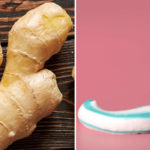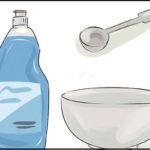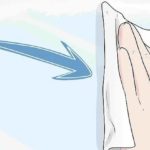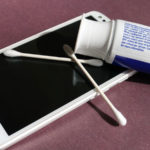Brushing your teeth daily is the most effective and simplest way to protect your oral health. However, the way you perform this process can greatly affect your oral health.
As a habit, many people usually wet the toothbrush in water before applying toothpaste, while others directly apply toothpaste to a dry toothbrush. So which method is correct and beneficial for oral health?
Should you wet your toothbrush before applying toothpaste?
Most people have the habit of applying toothpaste to a dry toothbrush and then wetting it before brushing. However, the first step you need to take is to wet your toothbrush before applying toothpaste. This action, though small, is necessary for the following reasons:

Should you wet your toothbrush before applying toothpaste? (Image: Shutterstock)
Firstly, after wetting the toothbrush, applying toothpaste will be easier, and the toothpaste will be spread more evenly, ensuring better coverage on the tooth surface, thereby improving the effectiveness of cleaning and removing plaque and food debris.
Secondly, the bristles of the toothbrush will be softer when wet, reducing the risk of gum irritation or damage to gums and tooth enamel during oral hygiene.
Furthermore, moisture activates the components of toothpaste, increasing the effectiveness against bacteria and maintaining oral hygiene. By wetting the toothbrush before applying toothpaste, you can improve the overall brushing experience and have better oral health. This is a simple but valuable step in daily oral care habits.
Brushing your teeth with a dry toothbrush can cause some negative effects on oral health. Dry bristles are more likely to wear down tooth enamel. Over time, this leads to tooth sensitivity and an increased risk of tooth decay.
Brushing your teeth in such a way can cause the bristles to wear out faster, reducing their usage time and effectiveness due to the accumulation of bacteria, causing bad breath. Brushing without foam may not effectively remove dirt on the tooth surface, resulting in tooth discoloration over time.
According to Yahoo Life, the habit of brushing teeth dry can also be harmful to the gums, leading to irritation, redness, and inflammation. This habit in the long run increases the risk of gum recession and reduces the effectiveness of plaque removal.
Proper toothbrushing steps
To take good care of your oral health, aside from brushing your teeth regularly every day, you also need to brush your teeth correctly following the steps below.
– Clean your oral cavity by rinsing your mouth with filtered water for about 30 seconds to remove plaque and leftover food in your mouth.
– Clean the toothbrush under running water, then take an adequate amount of toothpaste. Note that you should rinse the toothbrush under running water to clean away any bacteria that may be stuck in the toothbrush. Absolutely do not wet the toothpaste before brushing. Many people tend to choose a hard-bristled toothbrush because they think it will clean their teeth better. However, a hard-bristled toothbrush will increase the risk of tooth enamel erosion and gum recession.
– Place the toothbrush horizontally and tilt it at a 45-degree angle to the gum line. The bristle head should come into contact with both the teeth and gums. Brush the outer surface first, including all the teeth in the upper and lower jaw by gently brushing with a distance of 2-3 teeth from the upper jaw to the lower jaw or rotating the toothbrush 5-10 times so that the bristles can reach into each tooth gap to remove all food particles stuck to the teeth. You need to ensure that the brushing time for each brushing is 2-3 minutes. With this amount of time, the teeth will be thoroughly cleaned.
– Brush the inner surface of the teeth similarly to the outer surface. Brush all the teeth in the upper and lower jaw with an up and down or circular brushing motion. Do not brush too hard, but apply moderate force, and do not press the bristles deeply inside, as it may affect the gums.
– Brush the chewing surface by placing the toothbrush parallel to the chewing surface of the teeth, then gently move the toothbrush from the inside to the outside about 10 times.
– Brush the top surface of the tongue from inside to outside to remove bacteria that cause bad breath. In fact, many people forget this step.
– Rinse your mouth with clean water to remove toothpaste, clean your oral cavity. Rinse the toothbrush clean.
According to VTC news
Discover the Unexpected Benefits of Combining Ginger and Toothpaste
Did you know that combining ginger and toothpaste offers a surprising array of uses? Find out more by reading the article below.

























 Toothpaste
Toothpaste








